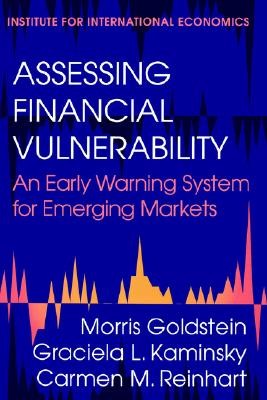
- We will send in 10–14 business days.
- Author: Morris Goldstein
- Publisher: Peterson Institute for International Economics
- ISBN-10: 0881322377
- ISBN-13: 9780881322378
- Format: 15.2 x 22.7 x 0.8 cm, minkšti viršeliai
- Language: English
- SAVE -10% with code: EXTRA
Reviews
Description
Ever since the European currency crises of 1992-93, the Mexican crisis of 1994-95, and especially the Asian/global crisis of 1997-98, there has been heightened interest in early warning signals of financial crises. This pathbreaking study presents a comprehensive battery of empirical tests on the performance of alternative early warning indicators for emerging-market economies that should prove useful in the construction of a more effective global warning system. Not only are the authors able to draw conclusions about which specific indicators have sent the most reliable early warning signals of currency and banking crises in emerging economies, they also test the out-of-sample performance of the model during the Asian crisis and find that it does a good job of identifying the most vulnerable economies. In addition, they show how the early warning system can be used to construct a "composite" crisis indicator to weigh the importance of alternative channels of cross-country "contagion" of crises, and to generate information on the recovery path from crises.
EXTRA 10 % discount with code: EXTRA
The promotion ends in 21d.22:06:43
The discount code is valid when purchasing from 10 €. Discounts do not stack.
- Author: Morris Goldstein
- Publisher: Peterson Institute for International Economics
- ISBN-10: 0881322377
- ISBN-13: 9780881322378
- Format: 15.2 x 22.7 x 0.8 cm, minkšti viršeliai
- Language: English English
Ever since the European currency crises of 1992-93, the Mexican crisis of 1994-95, and especially the Asian/global crisis of 1997-98, there has been heightened interest in early warning signals of financial crises. This pathbreaking study presents a comprehensive battery of empirical tests on the performance of alternative early warning indicators for emerging-market economies that should prove useful in the construction of a more effective global warning system. Not only are the authors able to draw conclusions about which specific indicators have sent the most reliable early warning signals of currency and banking crises in emerging economies, they also test the out-of-sample performance of the model during the Asian crisis and find that it does a good job of identifying the most vulnerable economies. In addition, they show how the early warning system can be used to construct a "composite" crisis indicator to weigh the importance of alternative channels of cross-country "contagion" of crises, and to generate information on the recovery path from crises.


Reviews